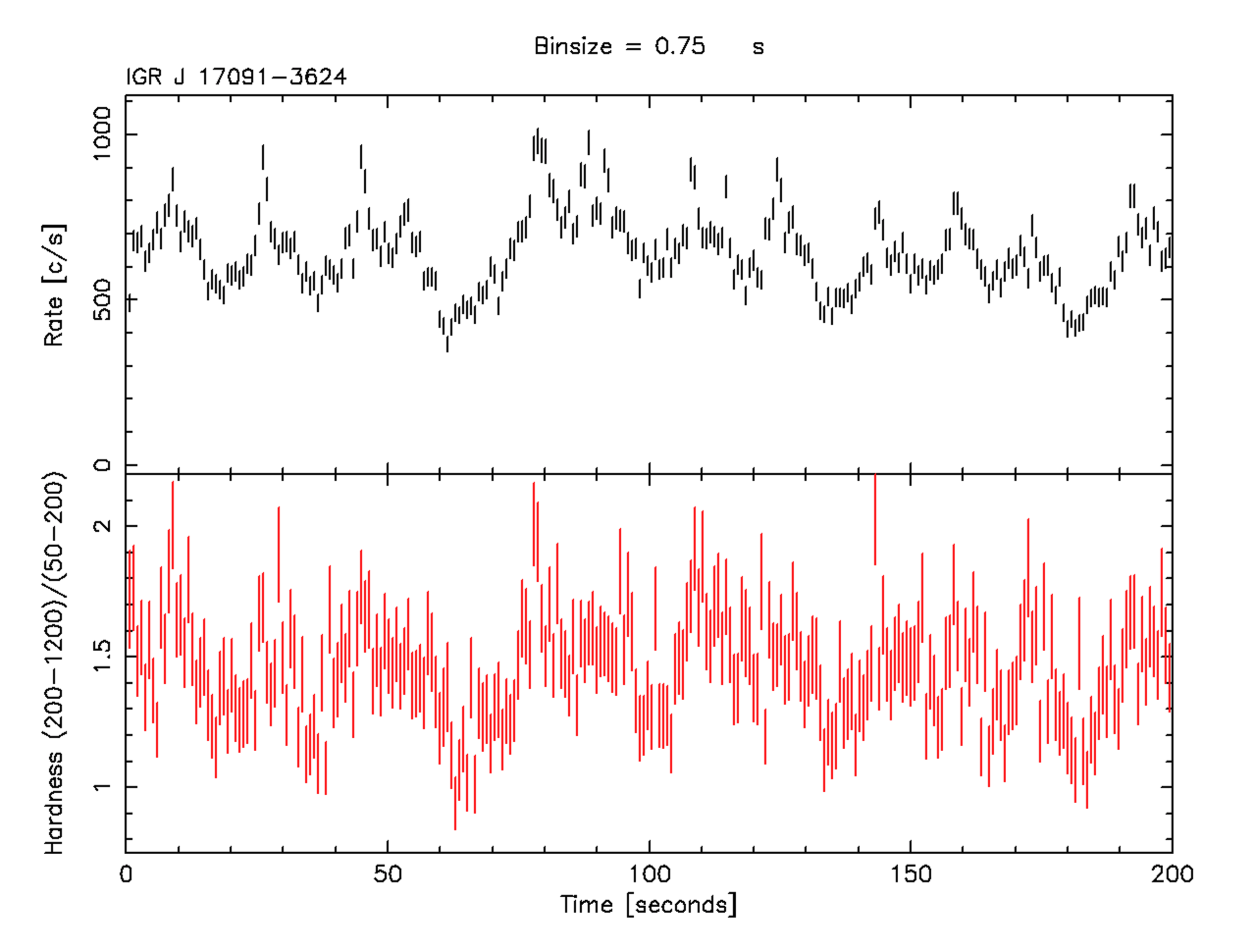NICER / ISS Science Nugget
for April 7, 2022
NICER Confirms X-ray "Heartbeats" from IGR J17091-3642
As described in our
March 24 report, NICER has been monitoring the latest outburst of the black-hole-candidate binary system IGR J17091, in hopes of confirming the existence of "heartbeat" modes of X-ray emission: regular dimming and brightening that resembles an electrocardiogram trace when X-ray intensity is plotted as a function of time. Before NICER's launch, a brief heartbeat episode had been recorded by NASA's NuSTAR telescope. As IGR J17091's outburst evolves, NICER has now seen multiple instances of heartbeat emission, with a typical time between peaks of 15-25 seconds (or 2-4 beats per minute; see Figure). With intensive observations over the last two weeks, the conditions (i.e., the properties of the X-ray spectrum) under which these heartbeat modes appear, with their differing waveforms and periodicities, are being fully explored. Rapid "telegram" notifications to the community are in preparation.

Figure: Top panel: The countrate of X-ray photon detections from IGR J17091 by NICER exhibits a heartbeat mode with typical spacing of 20 seconds between peaks. Lower panel: The ratio of counts in the high-energy (hard, 2-12 keV photon energy) band to the low-energy (soft, 0.5-2 keV) band. The heartbeat peaks correlate with harder emission, and the troughs with softer emission, providing a new clue to their origin.
<< Previous
Main Index
Next >>